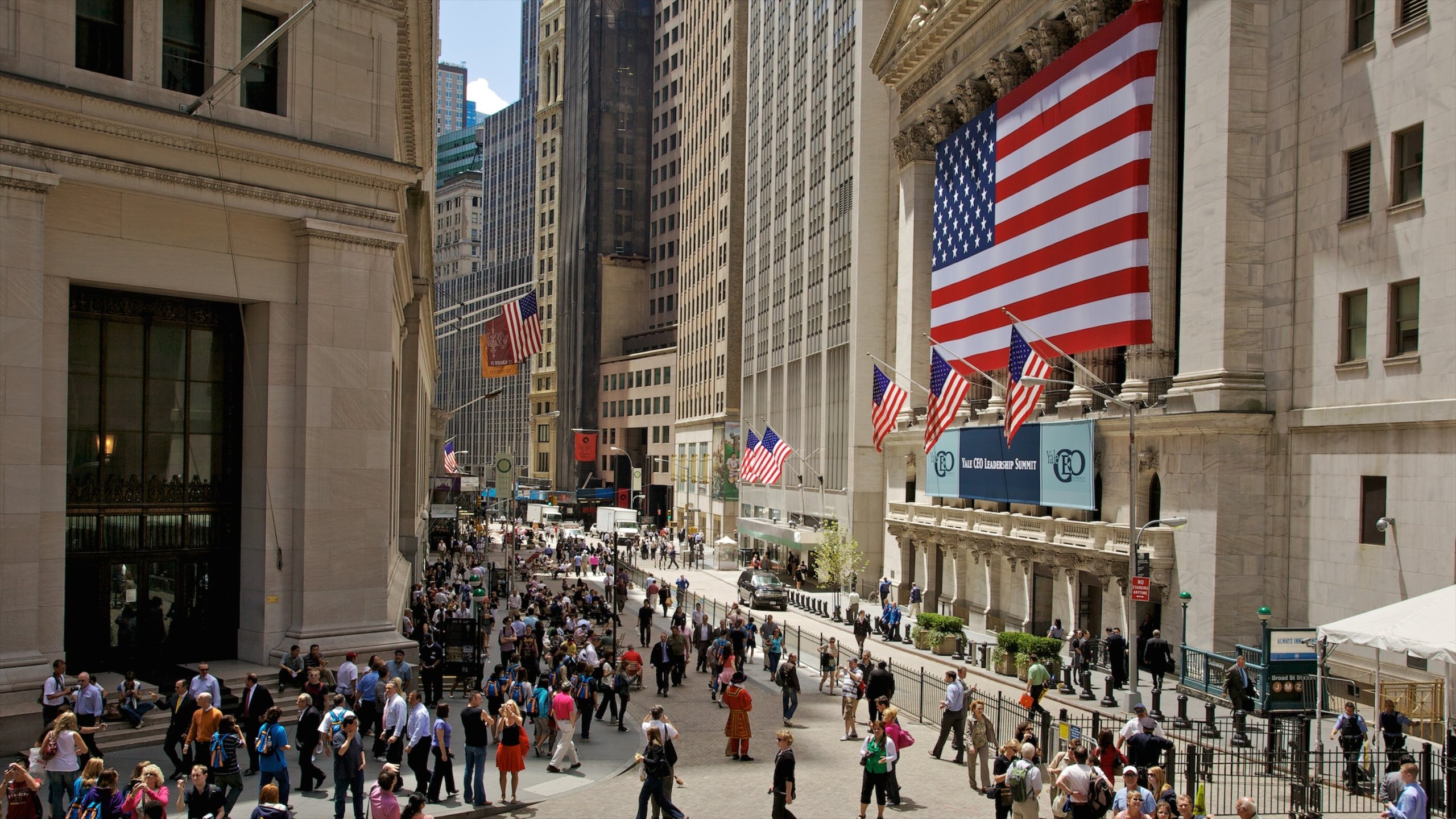New York — In a day marked by renewed optimism and a robust rally, Wall Street surged on Wednesday, driven by record-breaking bank profits and an encouraging decline in core inflation. The buoyant mood among investors propelled the major indices to notable gains, signaling a potential turnaround for financial markets in 2025 after a challenging start to the year.
The Dow Jones Industrial Average climbed an impressive 703 points, or 1.65%, closing at 43,222. The S&P 500 advanced 1.83%, while the Nasdaq Composite outperformed with a 2.45% gain. The market’s upward trajectory was fueled by dual catalysts: a significant easing in inflationary pressures and stellar fourth-quarter earnings from some of the country’s largest financial institutions, underscoring their resilience in a dynamic economic landscape.
The day’s trading began on a high note following the release of the Consumer Price Index (CPI) report for December by the Bureau of Labor Statistics. Core CPI, which excludes volatile food and energy prices, rose a modest 0.2% month-over-month, marking its slowest pace in months. On an annual basis, core inflation decelerated to 3.2%, down from 3.3% in September 2024. Headline inflation, which accounts for all items, ticked up slightly to 2.9% year-over-year from 2.7% in November, a rise that was largely anticipated and overshadowed by the relief in core measures.
The implications of this data reverberated across markets. A slowdown in core inflation alleviated concerns about aggressive monetary policy actions from the Federal Reserve. Investors took this as a sign that the Fed’s recent rate cuts were bearing fruit and that further policy tightening might be unnecessary. Chris Zaccarelli, Chief Investment Officer at Northlight Asset Management, commented that the inflation figures should ease pressure on both stock and bond markets, which had grappled with fears of a policy reversal in early 2025.
Adding to the bullish sentiment were exceptional earnings reports from the banking sector, which showcased their ability to capitalize on favorable market conditions and evolving economic dynamics. JPMorgan Chase emerged as a standout performer, posting a record annual profit of $58.5 billion. The bank’s fourth-quarter net income reached $14 billion, driven by robust trading revenue and a positive post-election market environment. CEO Jamie Dimon highlighted increased business optimism, citing expectations of a pro-growth agenda and stronger collaboration between the government and private sector as key drivers.
Goldman Sachs followed suit with a remarkable $4.11 billion in fourth-quarter profits, more than double its results from the same period in 2023. Citigroup, meanwhile, reported a significant turnaround, earning $2.9 billion in the fourth quarter of 2024 compared to a $1.8 billion loss a year earlier. The bank attributed its recovery to higher revenues, lower expenses, and improved credit conditions. Wells Fargo also delivered strong results, reporting a $5.1 billion profit for the quarter, a year-over-year increase from $3.4 billion. The earnings announcements lifted banking stocks, with Citigroup shares gaining 6.49% and Wells Fargo shares rising 6.69%.
Elsewhere in the financial sector, BlackRock, the world’s largest asset manager, reported a 21% year-over-year increase in fourth-quarter profits, reaching $1.67 billion. The firm’s assets under management climbed to a record $11.55 trillion, reflecting a 15% annual growth. BlackRock’s shares rose 5.19%, further contributing to the day’s market gains.
Bond markets also responded positively to the improved inflation outlook. The yield on the 10-year Treasury note declined as investors adjusted their expectations for future interest rate movements. Lower yields provide a boost to equities by enhancing their relative attractiveness. Larry Tentarelli, Chief Technical Strategist at Blue Chip Daily Trend Report, remarked that further declines in yields could serve as a tailwind for stocks, potentially driving additional gains in the S&P 500.
Despite the day’s rally, the outlook for Federal Reserve policy remains a subject of debate. Michael Gapen, Chief U.S. Economist at Morgan Stanley, suggested that the latest inflation data could prompt a rate cut as early as March. In contrast, Bank of America Global Research maintained that the Fed’s rate-cutting cycle had likely concluded, citing the data’s limited impact on their broader economic outlook. UBS struck a more balanced tone, indicating that rate cuts remain a possibility as inflation continues to moderate.
Energy markets added another layer of complexity to the day’s developments. Brent crude prices surged more than 3%, surpassing $82 per barrel, while West Texas Intermediate crude briefly crossed the $80 threshold, marking their highest levels since August 2024. These gains were partly driven by geopolitical factors, including President Joe Biden’s recent sanctions on Russia’s oil industry. While rising oil prices could stoke inflationary pressures, the broader market response suggested confidence in the resilience of the U.S. economy.
The focus now shifts to upcoming earnings reports from other major financial institutions, including Bank of America and Morgan Stanley, scheduled for release on Thursday. As Wall Street navigates these developments, the combination of easing inflation and strong corporate performance offers a promising start to the new year, setting the stage for potential growth in the months ahead.











